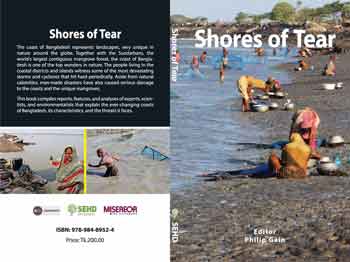
Dec 21, 2013 | Environment
Together with the Sundarbans, the world’s largest contiguous mangrove forest, the coast of Bangladesh is one of the top wonders in nature.
2013, English, 134 pages, Paperback Tk.200 / US$5
 Together with the Sundarbans, the world’s largest contiguous mangrove forest, the coast of Bangladesh is one of the top wonders in nature. Nowhere else in the coasts do people live with man-eating tigers like the people of the southwestern part of Bangladesh. The people living in the coastal districts and islands witness some of the most devastating storms and cyclones that hit periodically. During the past few decades these storms and cyclones have taken the lives of hundreds of thousands of people in the coasts and have caused enormous damages to the biomass that the mangroves sustain. Aside from natural calamities, man-made disasters have also caused serious damage to the coasts and the unique mangroves.
Together with the Sundarbans, the world’s largest contiguous mangrove forest, the coast of Bangladesh is one of the top wonders in nature. Nowhere else in the coasts do people live with man-eating tigers like the people of the southwestern part of Bangladesh. The people living in the coastal districts and islands witness some of the most devastating storms and cyclones that hit periodically. During the past few decades these storms and cyclones have taken the lives of hundreds of thousands of people in the coasts and have caused enormous damages to the biomass that the mangroves sustain. Aside from natural calamities, man-made disasters have also caused serious damage to the coasts and the unique mangroves.
The book, Shores Of Tear edited by Philip Gain and published by the Society for Environment and Human Development (SEHD) compiles reports, features, and scientific analyses that explain the ever-changing coasts of Bangladesh, its characteristics, and the threats it faces.
Different articles of the book deal with the unique coastal geography, life and struggle of the coastal communities, impacts of two recent storms and cyclone (Sidr and Aila), consequences of prawn aquaculture, scientific analysis of biomass loss of the Sundarbans caused by Sidr, mangroves and key underlying factors for their destruction, the extent and aspects of human-tiger conflict in the Sundarbans forest, and the mitigation measures to combat damages done or may be done due to human actions and climate change effects.
The key message this book communicates is that the shores of Bangladesh are in a sorry state. Natural calamities are inevitable. They hit, kill, and devastate. However, nature recovers from such damages eventually. But the exploitation and disasters that man has inflicted upon the shores seem to be irreversible. This needs to be reversed as much as possible.
Contributors to the Book: S.G. Hussain, Philip Gain, Abdullah F. Rahman, Bassil El-Masri, A.H.M. Ali Reza, Gertrud Neumann-Denzau, Helmut Denzau, Shekhar Kanti Ray, Partha Shankar Saha, Shanjida Khan Ripa, Ainud Sony, Tania Sultana, and Sabrina Miti Gain.
Published: 2013
Language: English
Paperback: 134 pages
Editor: Philip Gain
Price: Tk.200 / US$5
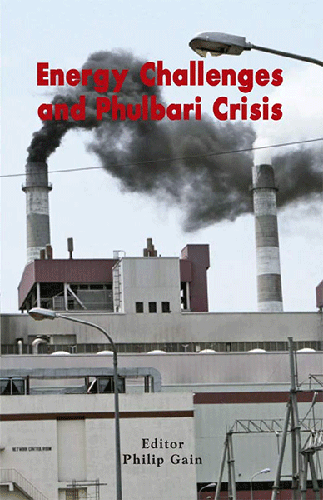
Dec 21, 2013 | Environment
A 240-page compendium, “Energy Challenges and Phulbari Crisis” intended for the laity in the first place, is an outcome of SEHD’s investigation and involvement into the controversial Phulbari open-cut coalmine. The aggressive approaches of the Bangladesh government and that of an arrogant British company [Asia Energy that changed its name to Global Coal Management PLC] for an open-cutcoalminecauseduproaramong the local people in the Phulbari mine area in Dinajpur district, Northwest of Bangladesh. We are convinced that the local people in the mine area had good reasons to stand strong against the open-cut coalmine and say, “We do not want coal mine”
Edited by Philip Gain, English, PBK 242 pages, 2013, Price: Tk.300, US$15
The local people felt deceived in not being clearly told by the government and the company that an open-cut mine was being planned and they did not see pragmatic approaches for compensation and how to handle an open-cut mine in a densely populated and an agriculturally very productive area.
As time passed, in 2006, the discontent began to heighten. The day, 26 August 2006, was sort of the final day when at least fifty thousand people took to the streets of Phulbari town. The people’s demonstration with sticks and musical instruments in hand was peaceful and unprecedented. It was surprising that the security personnel, all on a sudden, began to shoot, teargas and to baton-charge the demonstrators. Three people were shot dead and many injured. This led to stronger resistance. The company officials had to leave Phulbari and the government came to an agreement with the people represented by the National Committee to Protect Oil Gas Mineral Resources Port and Power.
This was a dramatic development in the history of the resistance movement in Bangladesh. The people’s power was vividly demonstrated. In one section of this compendium, SEHD reports, relevant facts, analyses, images, Prof. Anu Muhammad’s anatomy of the people’s resistance movement, and British mine expert Roger Moody’s critique of Asia Energy’s Environment and Social Impact Assessment (ESIA) for the Phulbari coal mine project have been put together. This section of the book helps understand the sentiment of people of Phulbari mine area and the factors that underlie the grassroots revolt.
With the Phulbari coal mine, the local communities and the whole nation is in a crisis and dilemma. In the face of many energy challenges with a very low per capita commercial energy use, the coal is an important discovery for the energy solution. Now how do we seek a balance in this situation? Contributions from some experts on energy help the laity understand energy issues and possibly help form informed opinions, very important in a country like Bangladesh.
Prof. Badrul Imam, Prof. Ijaz Hossain, and Sajed Kamal present overview and analyses on the energy status in Bangladesh, crisis and the factors behind; energy efficiency potentials in Bangladesh; and revolutionary scope of renewable energy.
A brief review of selected literature and documentary films on energy, web resources and a glossary also add value to this compendium. We trust this compendium will make people think and act prudently in dealing with energy issues.
Contributors to the Book: Prof. Badrul Imam, Prof. Ijaz Hossain, Anu Muhammad, Philip Gain, Roger Moody, Sajed Kamal, Partha Shankar Saha, Aneeka Malik, Shekhar Kanti Ray, Tania Sultana, and Ainud Sony.

Dec 21, 2013 | Magazines, Uncategorized
Karnaphuli Paper Mill (KPM), the oldest and largest integrated pulp and paper manufacturer in Bangladesh and a state owned enterprise, has been regularly dumping massive quantities of liquid waste into the Karnaphuli River since it started its operations in 1953. A state owned enterprise showing such disregard for national environmental laws and regulations sets a bad example for other industries in the country. Furthermore, the bamboo and the pulpwood it utilizes as raw materials deplete valuable forest resources to the detriment of those communities that inhabit the forest regions of the Chittagong Hill Tracts.
Asfara Ahmed’s report is an eye-opener for environmentalists and others who are interested in learning more about the current state of the country’s pulp and paper industry and its often overlooked and neglected environmental ramifications.
By Asfara Ahmed
English, PBK 44 pages, 2013
Price: Tk.100, US$5
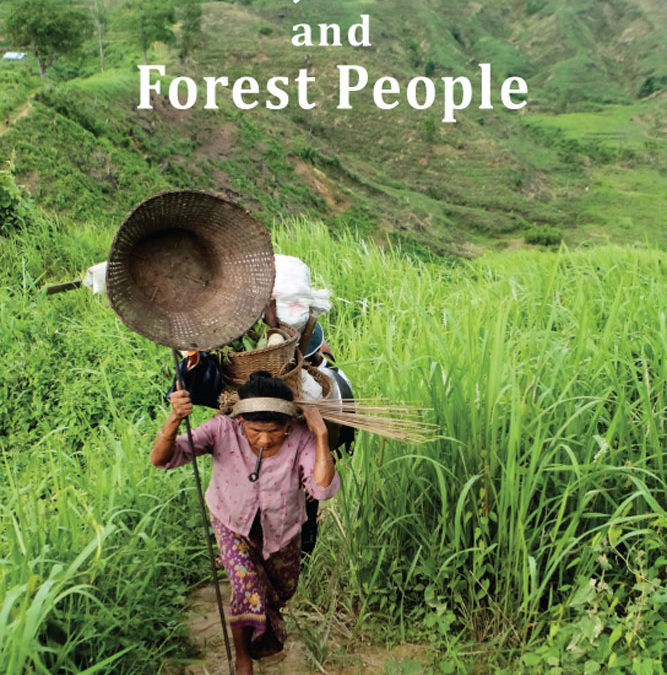
Oct 4, 2013 | Adivasis and Forests
Bangladesh is amazingly green. However, at the same time, it is a forest-poor country. Officially, 18% of the country (2.6 million hectares) is public forestland. 2013, English 284 pages(3rd edition), Paperback | Tk.300 / US$15
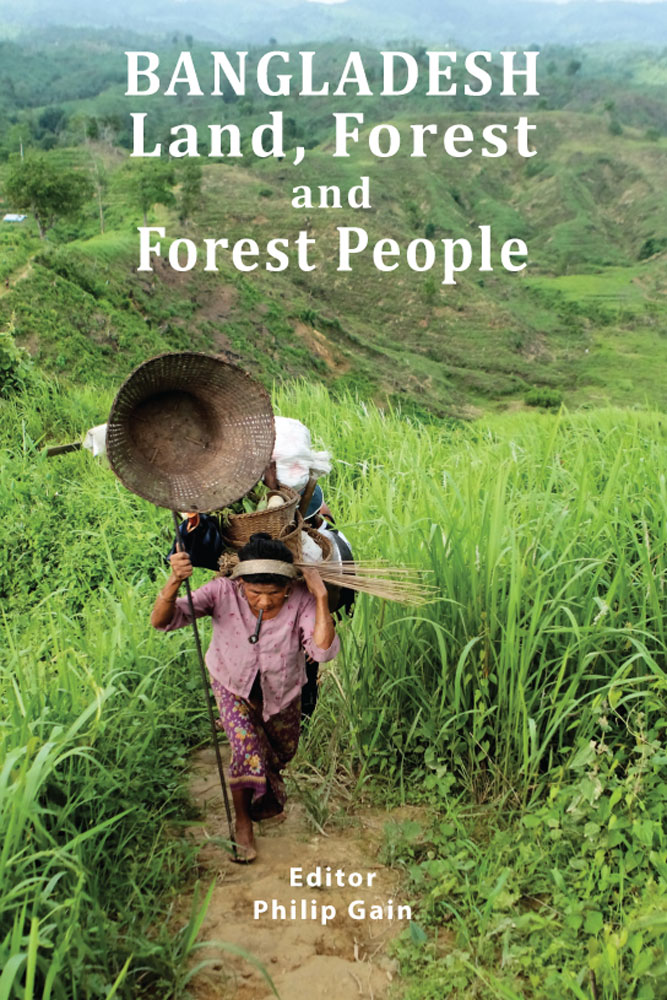 Bangladesh is amazingly green. However, at the same time, it is a forest-poor country. Officially, 18% of the country (2.6 million hectares) is public forestland. This is the same area of land mass recorded as forestland when the Forest Act of 1927 was framed. However, in reality, approximately only 6% is said to be covered by forests. This includes plantations of 403,458 ha since 1873. According to the Forest Department estimate of 2001, it controls 10.3 per cent of the land surface.
Bangladesh is amazingly green. However, at the same time, it is a forest-poor country. Officially, 18% of the country (2.6 million hectares) is public forestland. This is the same area of land mass recorded as forestland when the Forest Act of 1927 was framed. However, in reality, approximately only 6% is said to be covered by forests. This includes plantations of 403,458 ha since 1873. According to the Forest Department estimate of 2001, it controls 10.3 per cent of the land surface.
This book, a compendium, is about the forests of Bangladesh and the peoples who live there and how they are affected by the continued pillaging of our forest resources. Most of the adivasis of Bangladesh lived in the forests at one time. The forests were their commons and they had no trouble making a living out of jum (slash and burn or swidden) agriculture, hunting, and gathering. But today, the state has taken control of what used to be their ancestral land. The state laws, rules, and institutions no longer recognize their communal ownership. The state has also sponsored the migration and settlement of Bangalees into the forests that has caused severe environmental degradation and has displaced communities indigenous to the forests. Development projects and monoculture plantations on the forestland have also progressively exhausted the forest resources and deprived the forest dependent communities of their free access to the commons.
The Society for Environment and Human Development (SEHD), from its inception in 1993, has paid special attention to issues concerning forests and forest-dwelling communities who are faced with enormous difficulties as a result of the degradation of forests, the denial of customary rights and the invasion of monoculture plantations. Since the publication of the second edition of this book in 1998, the damaging practices on forestland have escalated up to the point of no return. SEHD has continuously documented the consequences of these damaging practices with special emphasis on plantation projects and has engaged a great deal of its time and resources in working with indigenous communities. Although it was too late in many respects, the international financial institutions (Asian Development Bank and World Bank) did eventually stop funding plantation projects in Bangladesh since 2007. However, irrecoverable damage had already been done. The adivasis or indigenous peoples continue to face hostility from the state and witness their access to land and forest resources continue to diminish.
The third edition, enriched with many new reports, stories, and analyses, will help its readers better understand forest related issues as well as the life and struggle of the peoples who still cling to the forests materially, culturally, and psychologically.
A galaxy of researchers, writers, and journalists who have contributed write-ups and reports to this book present facts, anecdotes, and analyses about the degradation of forests, its underlying factors, and how the forest dependent communities are severely threatened on their ancestral land.
Contributors to the book: Kibriaul Khaleque, Ph.D. (late), Philip Gain, Raja Devasish Roy, Mohiuddin Farooque Ph.D. (late), Mizanur Rahman (late), Brother Jarlath D’Souza, Abigail Haworth, Mohammad Tanzimuddin Khan, Amy Koenig, Partha Shankar Saha, Shekhar Kanti Ray, and Debashish Majumder.
Published: 2013
Language: English
Paperback: 284 pages
Edited by: Philip Gain
Price: Tk.300 / US$15
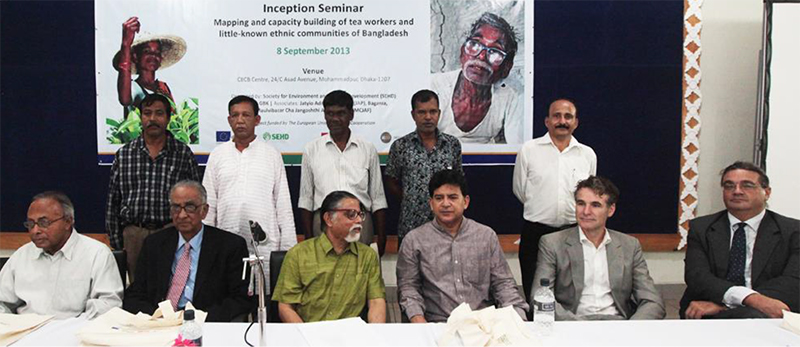
Sep 12, 2013 | Event Reports
“Many ethnic communities of Bangladesh are constitutionally and statistically invisible.”
– Dr. Hossain Zillur Rahman
Dr. Hossain Zillur Rahman, executive chairman, Power and Participation Research Centre (PPRC) said that many of the ethnic communities of Bangladesh are invisible, both constitutionally and statistically. “This invisibility must be dispelled so that they can raise their voices and claim their rights,” he suggested in a day-long inception seminar on “Mapping and capacity building of tea workers and little-known ethnic communities of Bangladesh” organised by The Society for Environment and Human Development (SEHD) in Dhaka on 8 September 2013.
Information and insights about the condition of the tea plantation workers in ‘tied’ situation and little-known ethnic communities of Bangladesh were shared at the seminar.
Justice Muhammad Habibur Rahman was present at the event as the chief guest. Chaired by Prof. Sakhawat Ali Khan, chairman of SEHD, the special guests and commentators were Philippe JACQUES, the head of cooperation, European Union Delegation to Bangladesh; Prof. Rafiqul Islam, professor emeritus, ULAB; Dr. Hossain Zillur Rahman, executive chairman, Power and Participation Research Centre (PPRC); and Leonard Zilstra, country representative, ICCO Cooperation, Bangladesh Office.
In his chief guest’s speech Justice Habibur Rahman said, “There are a good number of communities in Bangladesh who do not call themselves Bangalis; without knowing them, we cannot develop their communities. And without their development, Bangladesh cannot be developed.” He applauded SEHD’s initiative to make these ethnic communities known to the majority people.
Philippe JACQUES appreciated the initiative saying, “The project has an exciting approach as it combines action research and capacity building. All of us are going to learn a lot during the implementation.” He hoped that the living conditions of these deprived communities would become more humane as a result of this initiative.
In his welcome speech Philip Gain, general secretary of SEHD, said that a tea worker in neighbouring Sri Lanka gets Rs 550 per day while their Bangladeshi counterparts receive only BDT 69. Three years back, the daily wage was a meagre 32.50 BDT. He also described the miseries of little known-ethnic communities of Bangladesh as people of more than 50 communities are deprived of education and access to land. “To protect the rights, fundamental freedom and political representation, we have to raise consciousness of all,” he added.
Representatives from some 45 communities among others including academics, researchers, development activists and journalists participated in the seminar to share their reflections on how to develop useful tools for study and capacity building of communities and their organizations.
The tea plantation workers and their communities in “tied” situation in the labour lines of the tea gardens are one of the most marginalized and excluded groups of people of Bangladesh. Descendants of the indentured plantation labour force and isolated from the majority community they remain largely unrepresented in democratic and political processes. Among the ethnic communities living in the plains and even some in the CHT there are as many as 60 groups that are little-known or invisible to the majority community and also to the outside world. Capability deprivation of these communities makes their sufferings and the structural abuses generational.
“Mapping and capacity building of tea plantation workers and little-known ethnic communities of Bangladesh” is a 3 years project supported by the European Union and ICCO Cooperation (Netherlands) that has started in May 2013 to clearly identity the tea workers and the little-known ethnic communities, raise their issues, and build their capacity.
[PDF version DOWNLOAD]
Writer is research and documentation officer, Society for Environment and Human Development (SEHD).
Repot by Md. Ashraful Haque
First Published: Dhaka Courier, 12 September 2013

 Together with the Sundarbans, the world’s largest contiguous mangrove forest, the coast of Bangladesh is one of the top wonders in nature. Nowhere else in the coasts do people live with man-eating tigers like the people of the southwestern part of Bangladesh. The people living in the coastal districts and islands witness some of the most devastating storms and cyclones that hit periodically. During the past few decades these storms and cyclones have taken the lives of hundreds of thousands of people in the coasts and have caused enormous damages to the biomass that the mangroves sustain. Aside from natural calamities, man-made disasters have also caused serious damage to the coasts and the unique mangroves.
Together with the Sundarbans, the world’s largest contiguous mangrove forest, the coast of Bangladesh is one of the top wonders in nature. Nowhere else in the coasts do people live with man-eating tigers like the people of the southwestern part of Bangladesh. The people living in the coastal districts and islands witness some of the most devastating storms and cyclones that hit periodically. During the past few decades these storms and cyclones have taken the lives of hundreds of thousands of people in the coasts and have caused enormous damages to the biomass that the mangroves sustain. Aside from natural calamities, man-made disasters have also caused serious damage to the coasts and the unique mangroves.



 Bangladesh is amazingly green. However, at the same time, it is a forest-poor country. Officially, 18% of the country (2.6 million hectares) is public forestland. This is the same area of land mass recorded as forestland when the Forest Act of 1927 was framed. However, in reality, approximately only 6% is said to be covered by forests. This includes plantations of 403,458 ha since 1873. According to the Forest Department estimate of 2001, it controls 10.3 per cent of the land surface.
Bangladesh is amazingly green. However, at the same time, it is a forest-poor country. Officially, 18% of the country (2.6 million hectares) is public forestland. This is the same area of land mass recorded as forestland when the Forest Act of 1927 was framed. However, in reality, approximately only 6% is said to be covered by forests. This includes plantations of 403,458 ha since 1873. According to the Forest Department estimate of 2001, it controls 10.3 per cent of the land surface.